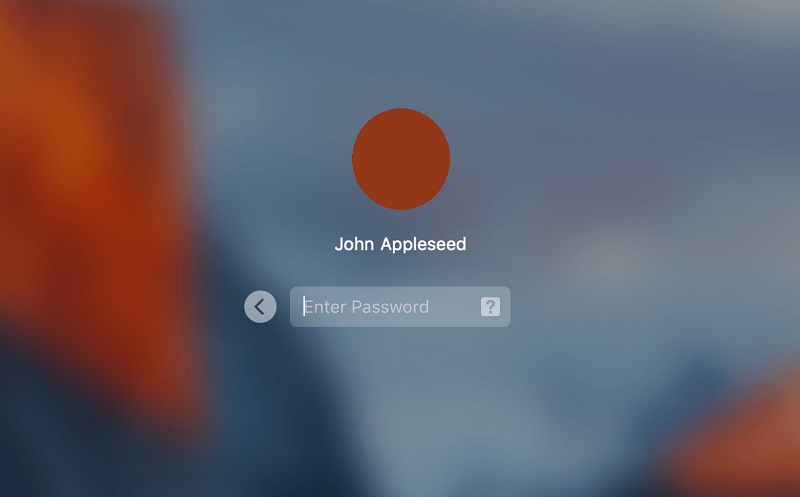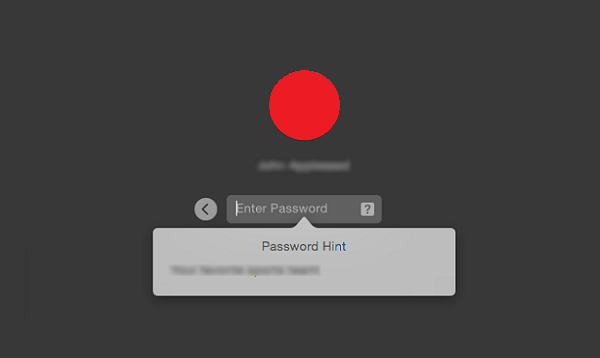Apple products, especially Apple’s iOS, are some of the most secure operating systems in the world. A lot of that has to do with Apple’s closed system as well as a smaller user base compared to behemoths like Windows and Android. Passwords are at the core of that secure system — at least on the user’s side.
Without the Mac password, people can’t delete some files, make any changes to the system, install new software, or use Touch ID (on MacBook Pro or Air). So, losing or forgetting that all-too-important password can be enough to ruin anyone’s day. But it doesn’t have to be a disaster.

Contents
How to Recover Your Mac Password
Relax and follow this step by step guide to recover your Mac password. Keep in mind that a Mac password is not the same thing as the Apple ID or iCloud login. Those two need a different approach. Read how to Delete an Apple ID.
Method 1: Use a Hint to Try and Remember the Password
Before doing anything else, it’s best to try and see if you can remember your password first. This option is much easier (and less time-consuming) than trying to recover or change the password. But that can only work if you set up a password hint in the first place.

The hint box doesn’t show up by default, though. It appears after three failed attempts. So to see the hint appear, enter the wrong password three times. Don’t worry — there’s no limit to how many failed attempts one can make when entering a Mac password.
If no hint shows up, then that’s either because no password hint exists or the login options don’t enable password hints. Unfortunately, there’s no way to change that setting other than by logging in. In that case, try one of the alternatives below.
Method 2: Login With Another Account and Change the Password
It is possible to get in and change the Mac password if there’s another account or admin on the Mac. You can use that account (if you haven’t forgotten that password too) and change the password of the account you want. Here’s how to do just that:
Step 1 – Select the other account and log in.
Step 2 – Go to “System Preferences” and open “Users & Groups.”
Step 3 – Click the lock icon in the bottom left of the window.
Step 4 – Enter the password of the currently logged-in account again.
Step 5 – Find the list of accounts for this Mac in the sidebar and select the account.
Step 6 – Click “Reset Password.”
Step 7 – Type in the new password and a new password hint.
Step 8 – Click on “Change Password” to confirm the new password.
Keep in mind that this doesn’t change the login keychain of that account. The current user will have to change that from their account as well — but they cannot do that without Admin rights.
Method 3: Try Using Recovery Mode to Reset the Password
If the two steps above are a bust, then recovery mode is the best (and final) bet. Here’s how to reset the password with recovery mode:
Turn the Mac off, then press the power button while holding down Command + R to boot into recovery mode.
Step 1 – Let go of the keys when the bar appears and wait for it to load.
Step 2 – Select “Disk Utility” and click on “Continue,” then go to Utilities → Terminal.
Step 3 – Enter “resetpassword” (one word, lower-case letters, and without quotes) and press “Return.”
Step 4 – Select the volume containing the account (usually the main hard drive) and choose the account under “Select the User Account.”
Step 5 – Enter the new password and hint.
Step 6 – Click “Save.” A keychain password warning will appear. Click “OK” and then on “Apple” and “Shut Down.”
Step 7 – Turn the Mac on again and type in the new password to log in.
Bonus Tips: Don’t Forget Your Mac Password in The First Place
It’s common to forget or lose a password these days. Technology plays a big part in that because everyone has and manages their lives online. Work accounts, shopping, social media everything’s digital now. There comes the point when remembering the passwords for all those accounts (and devices) becomes impractical.
Everyone in danger of forgetting their Mac (or other) passwords is better off getting a password manager. These are helpful as they provide secure storage for all passwords. Moreover, they can generate new passwords and sync everything across different devices.
So, if you forgot your Mac password, you can use the password manager on another device (e.g., smartphone) to find it before going through the recovery process. It’s simple, secure, and doesn’t need anyone ever to remember their passwords. Plus, if you forget any other passwords, you can open your Mac password manager and find them all there.
Additional Guides:
Summary
There are a few options open if you ever forget your Mac password. But try to take precautions to prevent it from ever progressing to that point. Get a password manager and turn on device syncing to make sure you can recover your password in a matter of seconds.






























